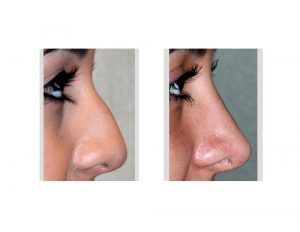Being a teenager is tough, but it can be a lot tougher if you don’t like your nose. While most teens deal with their physical imperfections with acne medication and trendy clothes, a nose that is too big can not be easily camouflagued. Unfortunately, being ridiculed for a big nose is not uncommon. With today’s social networking sites, such as Facebook and My Space, social ridicule can even extend to that of internet bullying.
As a result, a growing number of teenage Americans are opting for rhinoplasty surgery. Nose reshaping continues to be the most common cosmetic surgical procedure performed on teenagers in America…and maybe even around the world.
Undoubtably, our culture and perpetual media exposure has an influence on fragile teen self-images. Between TV shows, pop music icons, and the wider awareness and acceptance of plastic surgery, teens can be motivated to seek out physical changes. At least once a week, I receive inquiries on my blog from teens that identify themselves as being under 18 and there may be many more that do not reveal their real age. Several years ago teen inquiries were relatively non-existant.
At what age should rhinoplasty be performed in teens? Traditional plastic surgery thought is that the minimum age to undergo nose reshaping is 14 or 15 years for girls and 15 to 16 for boys. The concept is that one doesn’t want to operate too early on a nose that still has a lot of growing to do. While this traditional approach is sound, there are other factors that can alter these surgical time frames. What nasal problem is being corrected? How extensive is the surgery? Are there associated breathing problems? How much growing does the teen have yet to do? My experience operating on many cleft nose deformities at early teenage years, because of their severity, has shown me that the fear of growth restriction after early rhinoplasty is more perception than reality.
Teenage rhinoplasty is often touted as being easier to do (because of more flexible and malleable tissues) as well as easier to recover from after surgery. While this sounds appealing and even seemingly correct, there is little truth to those espoused benefits. The reason to reshape a nose during one’s teenage years is primarily for self-image and emotional benefits. Whatever healing or recovery benefits that exist between age 16 or 35, for example, are so negligible that it is irrelevant.

Because of the young age of teenagers, they have a long time for any healing deformities of the nose to appear. For this reason, it is important to not overdo the surgery or perform an overly aggressive rhinoplasty. Keeping good support to the nose is important. If too much cartilage or bone support is removed as a teenager, the need for secondary rhinoplasty as adults may develop if difficulty breathing, nasal deformities, and other problems develop due to the collapse of the nose.
Dr. Barry Eppley
Indianapolis, Indiana


